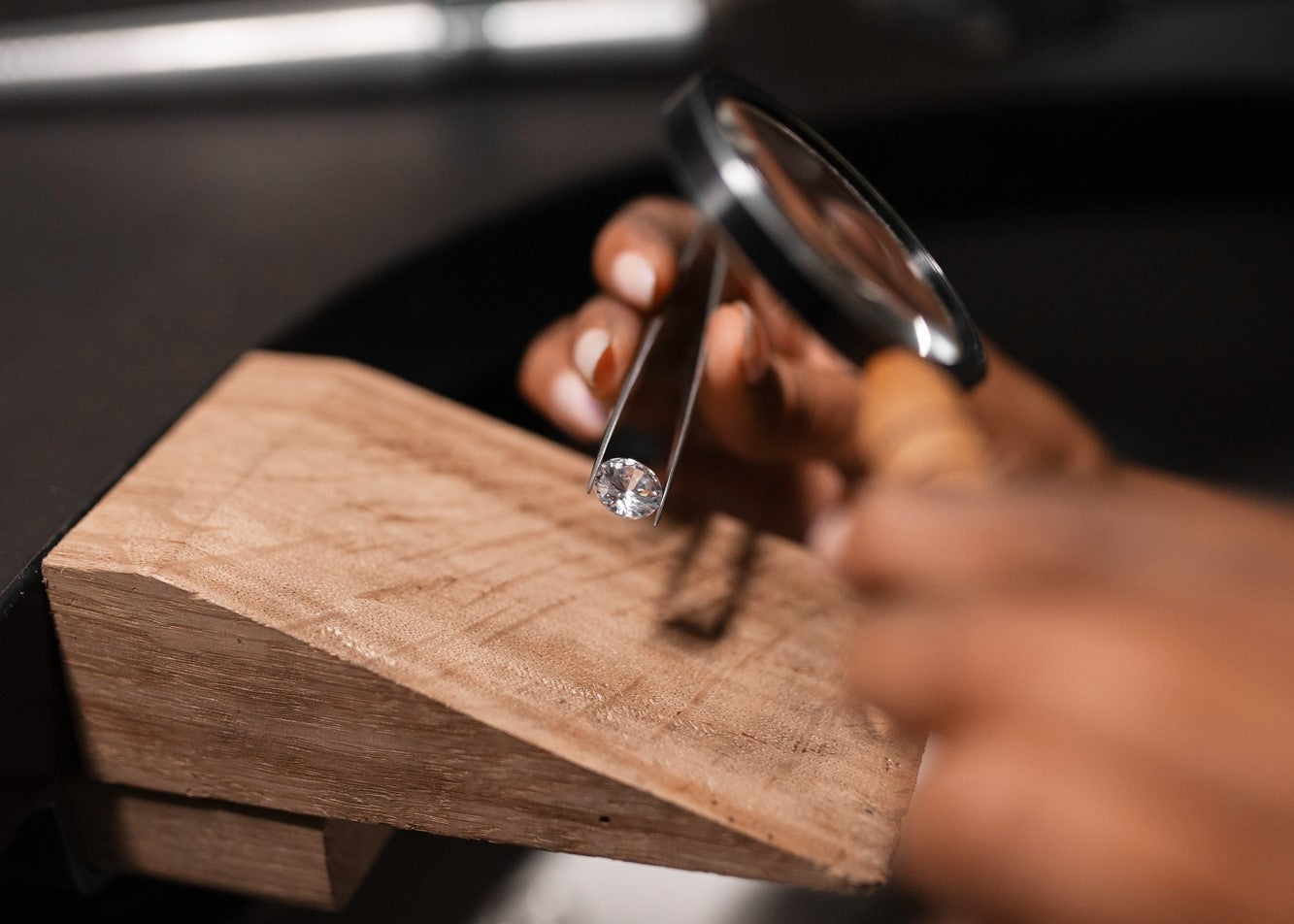Natural or Lab-Grown: A Diamond Decision That Reflects Your Values
Diamonds have always symbolized love, commitment, and timeless elegance. But in 2025, one of the most important decisions isn’t what diamond to choose — it’s which kind: natural or lab-grown?
As sustainability reshapes luxury, lab-grown diamonds are rising in demand. But natural diamonds still carry the timeless allure of Earth's ancient miracle. If you're unsure which one aligns best with your values, this guide will give you everything you need — from science to emotion, sparkle to ethics.
Let’s begin with the impact behind the beauty.
Is One More Ethical Than the Other?
Understanding the Source of the Sparkle
Natural diamonds are mined from the Earth, a process that, while now more regulated, historically raised concerns around labor, land disruption, and supply chain transparency. Today, responsible brands — including Xavia — ensure all natural diamonds are conflict-free and ethically sourced.
Lab-grown diamonds, by contrast, are created in controlled environments using HPHT (High Pressure, High Temperature) or CVD (Chemical Vapor Deposition) technology. They're physically and chemically identical to mined diamonds — but born without excavation.
“Lab-grown diamonds offer traceability and a significantly reduced environmental footprint, making them an attractive option for conscious consumers.”
— SCS Global Certification, 2024 Sustainability Report
Carbon Footprint: Lab-Grown vs Natural (Backed by Data)
| Impact Factor | Lab-Grown Diamond | Natural Diamond |
|---|---|---|
| CO₂ Emissions (per carat) | ~20–30 kg | ~100–250 kg |
| Land Use | Minimal | Extensive |
| Water Usage | Lower | Higher (by 7x+) |
| Traceability | Transparent | Often fragmented |
On average, lab-grown diamonds emit 3–10x less CO₂ per carat than mined stones. Their environmental footprint is significantly smaller — particularly when labs are powered by renewable energy.
How Are Lab-Grown and Natural Diamonds Made?
Natural diamonds are formed 100–150 km beneath the Earth’s surface, crystallizing over billions of years under intense pressure and heat. They surface through rare volcanic eruptions.
Lab-grown diamonds are produced in a matter of weeks.
-
HPHT replicates natural formation conditions using pressure and heat.
-
CVD uses a carbon-rich gas in a vacuum chamber to grow the diamond layer by layer.
Both result in genuine, certified diamonds.
Can You Tell Them Apart?
Many shoppers wonder: Can you tell if a diamond is lab-grown just by looking at it?
The answer: not without specialized equipment.
To the naked eye — even under magnification — lab-grown and natural diamonds are visually identical. Both can achieve D color, flawless clarity, and exhibit stunning fire and brilliance.
Only gemological labs can distinguish origin using advanced tools like UV fluorescence or spectroscopy.

Are Lab Diamonds Chemically the Same?
Yes — lab-grown diamonds are chemically and structurally 100% real diamonds.
They share the same:
-
Hardness: 10/10 on the Mohs scale
-
Density & Optical Properties: Identical
-
Brilliance & Light Performance: Based on cut, not origin
They’re just as durable, beautiful, and timeless.
How Are They Certified?
Trusted Diamond Certification Labs in 2025
Both lab-grown and natural diamonds can be certified by leading institutions:
| Certification Lab | Grades Lab-Grown? | Grades Natural? | Notes |
|---|---|---|---|
| GIA | ✅ Yes | ✅ Yes | Most globally recognized |
| IGI | ✅ Yes | ✅ Yes | Common for lab-grown |
| GCAL | ✅ Yes | ❌ No | Offers light performance reports |
Each Xavia diamond includes:
-
A certificate of authenticity
-
Full 4Cs grading
-
Laser inscription on the girdle
-
Clear origin disclosure (lab or mined)

Why Are Lab-Grown Diamonds More Affordable?
Lab-grown diamonds typically cost 40–60% less than natural ones. This price difference exists because:
-
Labs produce diamonds faster and at scale
-
Supply chains are shorter and more efficient
-
There’s no mining, shipping, or exclusivity mark-up
But less expensive doesn’t mean less meaningful.
At Xavia, value is measured by intention — not just price.
Can Lab Diamonds Be Used in Fine Jewelry?
Absolutely. Xavia uses certified lab-grown diamonds in:
-
Engagement rings
-
Eternity bands
-
Stackable styles
-
Bespoke designs
They're durable, heirloom-worthy, and indistinguishable from mined diamonds in every luxury context.
Frequently Asked Questions About Lab vs Natural Diamonds
Are lab-grown diamonds fake?
No. They're real diamonds — just created differently.
Will a lab-grown diamond fade or change over time?
No. They remain as brilliant and durable as mined diamonds.
Can you tell it’s lab-grown just by looking?
Only trained gemologists can detect origin, using specialized tools.
Are lab-grown diamonds ethical?
Yes — especially when certified by trusted labs and produced with renewable energy sources.
Lab vs Natural — Which Diamond Aligns With You?
Still deciding? Ask yourself:
-
Do I care more about origin or appearance?
-
Does environmental impact influence my choice?
-
Do I prefer heritage value or modern sustainability?
There’s no wrong answer — only what feels true to you.
Both options offer brilliance, meaning, and the promise of forever.
Whichever You Choose, Choose With Clarity
At Xavia, we believe a diamond should reflect not just light — but your values.
Whether you choose the timeless wonder of Earth or the innovation of the lab, your diamond should be beautifully you.

